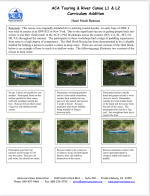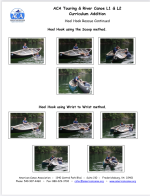The purpose of this thread is to collect private or commercial videos demonstrating open canoe rescues, paddler rescues, canoe re-entries, throw rope technique, z-drags and other pinned canoe rescue techniques, and the like.
Here is a short video demonstrating the "parallel rescue" of a loose and unoccupied canoe.
Here is a short video demonstrating the "parallel rescue" of a loose and unoccupied canoe.


